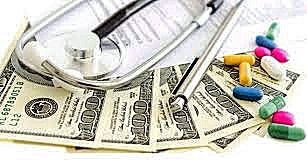The new treatments cost tens of thousands of euros. But citizens cannot know how much taxes go to research and how much to marketing and managers.
16/06/2015 – I Diavoli – LINKSIESTA
Of course, as with all things, there is a downside. The costs of treatments that make use of these drugs often reach figures bordering on sustainability, indeed, given the data in hand, it is possible to say that if they were used for all potential patients, public health accounts would be seriously jeopardized.
These are some prices to make people understand the phenomenon:
– Kalydeco – Vertex (Fibrosi cistica): 237.601,06* €
– Torisel – Pfizer (Oncologia): 52.000 €;
– Sovaldi – Gilead (eradicazione Epatite C): 37.000 €?
– Viekarix-Exviera – AbbVie (eradicazione Epatite C): 27.000 €?
– Daklinza – Bristol-Myers Squibb (eradicazione Epatite C)
– Olysio – Janssen (eradicazione Epatite C): 30.000 €?
– Harvoni – Gilead (eradicazione Epatite C): 50.000 €?
* price for the supply of the Kalydeco specialty for 12 months. Resolution No. 168 Tuscan Estar
THE
But why are these drugs so expensive? Let's take Sovaldi for example. There Gilead in 2012 it acquired for 11.2 billion euros from Pharmasset, the company that developed the molecule, but the financial statements of the same show that the research and development costs incurred in the years in which Sovaldi was developed amounted to 176 7 million dollars, of which just over 62 related to the super-drug.
Silvio Garattini director of the Mario Negri institute: «The cost of research, even if much emphasized, represents only about 9% of the industrial turnover; while what greatly affects the price of drugs are promotion and advertising»
For completeness of information, we also report the statement of the president of Pharma industry Massimo Scaccabarozzi who declared that: "Today, a new drug requires over 2 billion investments, 10 years to develop it and the patent is used only for the following 8-9 years, while only one molecule out of 10,000 reaches the market". And speaking of marketing authorization, it should be emphasized that the contracts signed by AIFA with the pharmaceutical companies are all subject to a confidentiality clause. In essence, some "details" of the contract are not known, such as the price and/or discounts that are applicable based on the volume of purchase or therapeutic adherence by patients (this explains the question marks after the prices shown above) .
Why do pharmaceutical companies claim confidentiality on this type of contract? Isn't it more correct that citizens know where their tax money is going to end up?
Related news: Who are the highest paid Italian managers abroad? Vince Andreotti Jr
